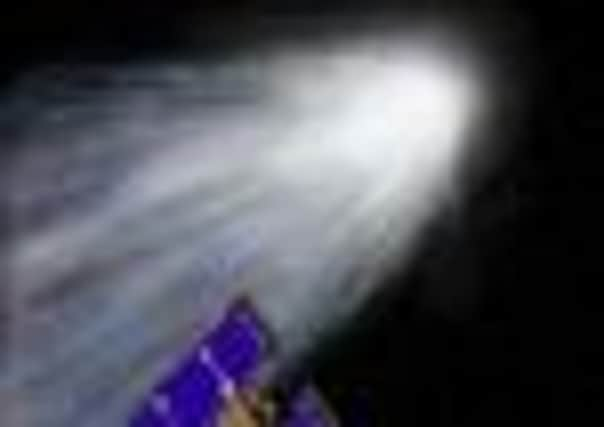Unlocking the secrets of supersonic snowballs from hell


Concern over the carnage that could be caused by massive comets weighing tens of thousands of tons hitting the earth has added an urgency to the research which is being conducted in Scotland.
Scientists have looked at a number of methods to prevent comets crashing to earth, including strapping bombs to rockets and firing them into the path of comets to deflect them away from the planet.
Advertisement
Hide AdAdvertisement
Hide AdToday Professor John Brown, former Regius Professor of astronomy at Glasgow University, will provide astronomers with findings from years of research on how comets behave, how they interact with the Sun, and how to predict their trajectory.
Prof Brown said it was “not impossible” for a comet to hit the earth “tomorrow or in a hundred million years”.
Until now the quest to find out why some comets survive has eluded scientists, with none seen very close to the Sun because sunlight glare made observation impossible.
Comets are giant dusty “icy snowballs” believed to date from the epoch of the formation of the Sun and planets, and contain vital information about the formation of the solar system.
Prof Brown will present his paper “Supersonic Snowballs in Hell” at the 2012 National Astronomy Meeting in Manchester today. We worked out the way the different ways comets give up their mass, momentum and energy to the Sun’s atmosphere according to their height,” he said.
“We found that ‘sunskimmer’ comets – those with their closest approach more than 7,000 km from the Sun – are destroyed in a slow ‘fizzle’ lasting hundreds to thousands of seconds depending on their mass.
“In contrast, the ‘sunplungers’ that approach the Sun more closely will be destroyed in a few seconds as they crash into the dense layers of the lower solar atmosphere. Finally, if the most massive comets were to collide with the Sun they would produce dramatic explosions just above the photosphere [visible surface of the Sun] itself.”
While he acknowledged there is always the possibility of a comet striking earth, Prof Brown said damage could be caused by a comet hitting the sun and sparking a solar flare. “If a big one hit the sun we would get a solar flare which would cause power cable damage with northern latitudes such as Scotland and Alaska more likely to experience damage,” he said.
Advertisement
Hide AdAdvertisement
Hide AdProf Brown, who was awarded the Gold Medal of the Royal Astronomical Society earlier this week, added: “The two sunskimmers seen last year have already given us a new insight into the Sun’s atmosphere and it’s only a matter of time before we see the flare from a sunplunger – with a low enough orbit to reach the lower atmosphere of the Sun.
“When that happens we will be able to analyse the light from the resulting ‘cometary flare’ and find out even more about the composition of the interiors of comets.”
In July and December last year two unique comet “events” were recorded by Nasa in line with the predictions of Prof Brown and his team when the Solar Dynamics Observatory satellite made the first direct observations of comets making close approaches to the Sun.
The first comet, SOHO C/2011 N3, was completely destroyed after passing 100,000 km above the photosphere. The second and larger comet, Lovejoy C/2011 W3, survived a close approach to a similar distance (140.000 km) although it lost a significant fraction of its mass in the process.